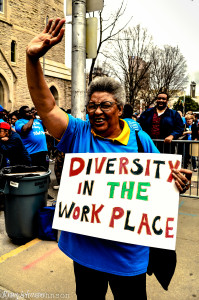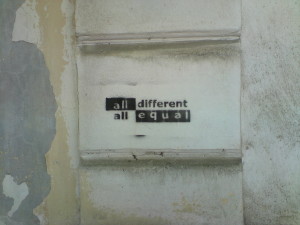Diversifying PR Perspectives
Published on November 17, 2015, at 6:00 p.m.
by Madalyn Atherton.

The dictionary defines public relations as the “state of the relationship between the public and a company or other organization.” PR is about telling stories. Whether it’s to sell something or promote someone or any of the other countless reasons, a story is at the center of every campaign.
Why, then, are PR professionals only telling one side of the story?
Only 10 percent of all PR professionals are African-American or Hispanic. Women make up 63 percent of professionals, but only 13 percent of upper management.
For an industry that exists to influence all types of people, public relations as a whole definitely doesn’t have every viewpoint.
Diversity isn’t just important; it’s vital. It’s estimated that by 2042, half of US consumers will be ethnic. If public relations doesn’t catch up with multiculturalism, it runs the very real risk of becoming obsolete because it won’t be able to do its job. Without diverse points of view, it’s impossible to properly influence a group of people.

No matter how “open minded” someone says they are or how many ethnic friends they have, there are aspects of being a part of a group of people that outsiders can’t understand. People can become more sensitive to the situations of others, but there are delicate nuances and instinctual responses that can only be fully understood if someone has been raised in them.
Diversity and equality have become very hot topics in the past few years – not just in public relations, but in all aspects of life in every country. Unlike trends, though, diversity is an issue that isn’t going away. The International Business Times wrote an article about how the majority of journalists that cover the political beat are white males. It goes on to say that the number of minorities and women in newsrooms has been stagnant for the past decade at 12 percent despite the steady increase of minority populations in the United States.
Without a proper representation of the population of the country, it’s impossible to accurately cover issues that directly affect minorities like police brutality, Black Lives Matter and social justice movements.
Much like a newsroom, public relations can’t accurately represent a group of people or influence them without knowing their intricate nuances.
An article in the Scientific American says a group of people with diverse individual expertise is better than a homogeneous group at solving complex, non-routine problems.

So, diversity in public relations doesn’t just make it easier to correctly tailor messages to a diverse audience. People with different experiences can help solve a multitude of different problems, not just ones specific to their group.
The same study also said that more diverse groups of people valued innovation and new ideas more than homogeneous groups. Those are two things that the public relations industry values very highly.
At this point, discussing the benefits of diversity should be a moot point. Our industry should reflect our world, and it doesn’t. Perhaps we should take the lead from recently sworn-in Canadian Prime Minister Justin Trudeau who, when asked why he purposefully appointed 15 women to his 30-person cabinet – a first for the country – responded, “Because it’s 2015.”




